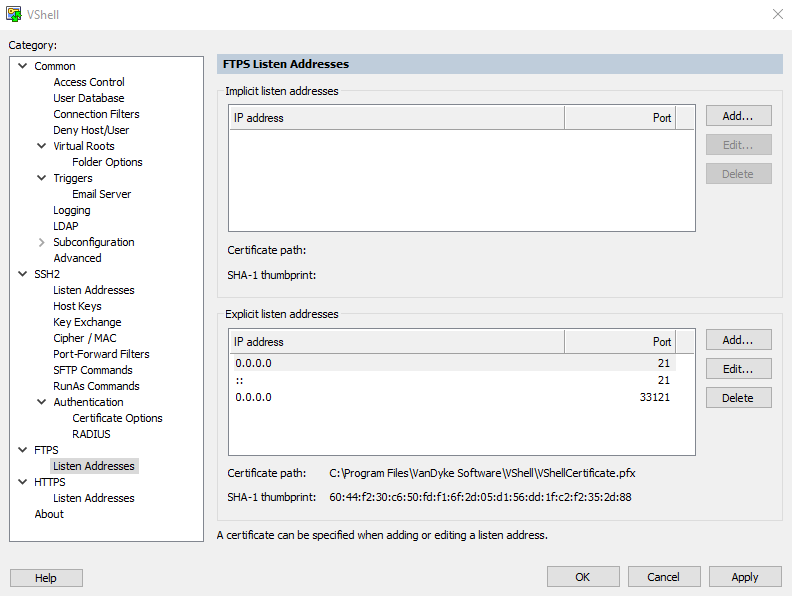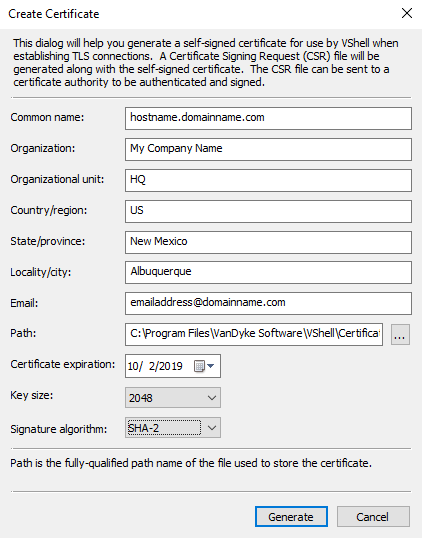FTPS is a secure file transfer option that uses the same protocol as FTP. All data sent or received using FTPS is protected by TLS (Transport Layer Security) based encryption. For more information on the protocol, please see the IETF RFC document 4217.
Most of the VShell configuration options are shared between the VShell FTPS server, the VShell SSH2 (SFTP) server, and the VShell HTTPS server (available with the HTTPS Enterprise edition for Windows).
Shared options include access control settings, connection filters, deny host, virtual roots, triggers, logging, the VShell internal user database, and others.
There are several options that are specific to the FTPS service:

In order for the TLS negotiation to succeed, VShell FTPS must be configured to use a certificate. A certificate must be specified for each listen address configured. A certificate can be specified or created while editing or adding listen addresses.

Rather than creating a self-signed certificate, VShell FTPS can also be configured to use a pre-existing certificate for TLS negotiation. The certificate must meet the following requirements:
The listen addresses can all use the same certificate or a unique certificate can be specified for each address.
VanDyke Software uses cookies to give you the best online experience. Before continuing to use this site, please confirm that you agree to our use of cookies. Please see our Cookie Usage for details.
Here you can control cookies using the checkboxes below. Some cookies are essential for the use of our website and cannot be disabled. Others provide a convenience to the user and, if disabled, may reduce the ease of use of our site. Finally, some cookies provide anonymous analytic tracking data that help us provide the user with a richer browsing experience. You can elect to disable these cookies as well.